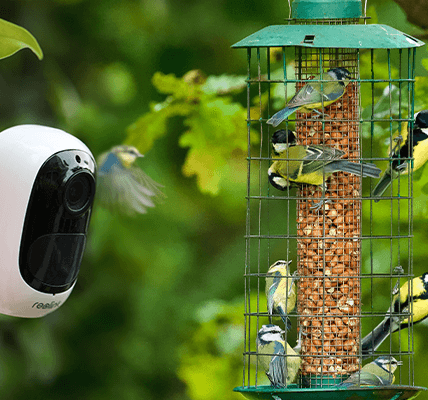wood fence posts are an important part of any fencing system. They provide support and stability for the entire fence. Whether you want to build a fence for privacy, security, or decoration, choosing the right wood fence posts is crucial. In this article, we will explore the different types of wood used for fence posts, how to install them, and tips for maintaining your wooden fence.
When it comes to building a fence, many people think about the panels or gates, but the posts are just as important. Wood fence posts hold everything together and keep your fence upright. They come in various sizes and styles, making it easy to find the perfect fit for your needs. Understanding the different options will help you make an informed decision.
The installation and maintenance of wood fence posts are also essential. Knowing how to properly install them will ensure that your fence lasts for many years. Additionally, regular maintenance will keep your fence looking great and functioning well. This article will give you all the information you need to work with wood fence posts successfully.
Types of Wood for Fence Posts
Choosing the right type of wood for your fence posts is very important. Different types of wood have unique qualities that can affect the durability and appearance of your fence. Here are some common types of wood used for fence posts:
- Pressure-Treated Pine: This is one of the most popular choices for fence posts. The wood is treated with chemicals to resist rot and insects. It is affordable and can last many years if maintained properly. Pressure-treated pine is often used for residential fences.
- Cedar: Cedar is known for its natural resistance to decay and insects. It has a beautiful color and pleasant aroma. Cedar posts can be more expensive than pressure-treated pine, but they are durable and can last for a long time.
- Redwood: Similar to cedar, redwood is resistant to decay. It is also known for its attractive color and grain patterns. Redwood can be quite costly but offers a unique and stylish look for your fence.
- Locust: Black locust is a very strong and durable wood. It is naturally resistant to rot and can last for decades without much maintenance. Locust posts are often used in agricultural settings.
- Spruce: Spruce is a softer wood that is less expensive than other options. However, it is not as durable and may require more maintenance. Spruce is best used for temporary fences or areas where the posts will not be exposed to harsh weather.
Benefits of Different Wood Types
Each type of wood has its advantages and disadvantages. Here are some benefits of using these woods for your fence posts:
- Pressure-Treated Pine:
- Affordable
- Widely available
- Treated for long-lasting use
- Cedar:
- Natural resistance to insects and decay
- Attractive appearance
- Good insulation properties
- Redwood:
- Durable and strong
- Beautiful natural color
- Less likely to warp
- Locust:
- Very long-lasting
- Strong and tough
- Requires minimal maintenance
- Spruce:
- Low cost
- Lightweight
- Easy to work with
Choosing the right wood for your fence posts will depend on your budget and how long you want the fence to last.
Installing Wood Fence Posts
Installing wood fence posts correctly is very important for the stability of your fence. Here is a step-by-step guide to help you through the process:
- Gather Your Materials: You will need wood fence posts, concrete, a post hole digger, a level, and a measuring tape. Having all your materials ready will make the process smoother.
- Plan Your Fence Line: Mark where you want your fence to go. Use stakes and string to outline the area. Make sure to measure the distance between each post to ensure they are evenly spaced.
- Dig the Holes: Use a post hole digger to make holes for your posts. The holes should be about 1/3 of the post’s length deep. For example, if your post is 6 feet long, the hole should be at least 2 feet deep.
- Place the Posts: Put the post in the hole and make sure it is straight using a level. This step is important to ensure your fence looks good and is stable.
- Add Concrete: Mix the concrete according to the package instructions and pour it into the hole around the post. Allow the concrete to set for at least 24 hours before attaching any panels or gates.
- Finish Up: After the concrete has set, you can start adding the fence panels. Make sure to secure them well to the posts to create a sturdy fence.
Tips for Successful Installation
- Use a Level: Always check that your posts are straight with a level. This ensures your fence looks neat and professional.
- Check Local Regulations: Before installing a fence, check with local regulations about property lines and fence heights.
- Use Quality Materials: Invest in good quality wood and concrete to ensure your fence lasts.
- Ask for Help: If you are unsure about any step, don’t hesitate to ask a friend or a professional for help.
Following these steps will help you build a strong and beautiful fence with wood fence posts.
Maintaining Your Wood Fence Posts
Proper maintenance is key to extending the life of your wood fence posts. Here are some essential tips for keeping your fence in good condition:
- Regular Inspections: Check your fence posts at least once a year for signs of rot, damage, or insect infestations. Early detection can save you time and money.
- Cleaning: Keep your fence clean by removing dirt, leaves, and debris. You can use a soft brush and mild soap to clean the surface of the wood. Avoid using harsh chemicals, as they can damage the wood.
- Sealing and Staining: Apply a wood sealant or stain to protect your fence posts from moisture and UV rays. This will help prevent rot and keep the color looking fresh. Reapply the sealant every few years for the best results.
- Repairing Damage: If you notice any cracks or holes in your posts, repair them promptly. You can fill small holes with wood filler. For larger issues, consider replacing the damaged post.
- Trimming Vegetation: Keep plants and shrubs trimmed away from the fence to prevent moisture buildup. Plants can trap water against the wood, leading to rot.
Benefits of Proper Maintenance
Maintaining your wood fence posts will not only improve their appearance but also extend their life. Here are some benefits of proper maintenance:
- Longer Lifespan: Regular care will help your fence last many years, saving you money in the long run.
- Better Appearance: A well-maintained fence looks nicer and adds value to your property.
- Increased Stability: Keeping posts in good condition ensures your fence remains sturdy and safe.
- Protection Against Pests: Regular inspections help you catch pest problems before they become severe.
With proper care, your wood fence posts can serve you well for many years, providing beauty and security to your property.
Conclusion
wood fence posts are a vital part of any fencing system. They provide support and stability, ensuring your fence remains upright and functional. By choosing the right type of wood, following proper installation techniques, and maintaining your fence, you can enjoy a beautiful and durable fence for many years.
Wood fence posts come in various types, including pressure-treated pine, cedar, redwood, locust, and spruce. Each type has its unique qualities, making it essential to choose the one that best fits your needs. Installing and maintaining your fence properly will enhance its lifespan and keep it looking great. With the right knowledge and care, your wood fence posts will be a valuable addition to your home.
FAQs
Q: How deep should I bury wood fence posts?
A: Wood fence posts should be buried about 1/3 of their length. For example, a 6-foot post should be buried at least 2 feet deep.
Q: How often should I seal my wood fence posts?
A: It is best to seal your wood fence posts every few years to protect them from moisture and UV rays.
Q: What is the best wood for fence posts?
A: Pressure-treated pine, cedar, and redwood are popular choices due to their durability and resistance to decay.
Q: Can I install fence posts myself?
A: Yes, you can install fence posts yourself if you follow the proper steps and have the right tools.
Q: How can I tell if my fence posts are rotting?
A: Check for soft spots, discoloration, or cracks in the wood. If you notice any of these signs, it may be time to replace the post.




